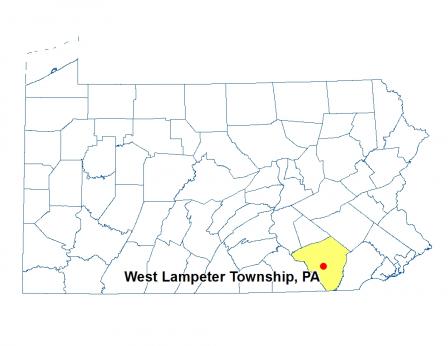Stories of Progress in Achieving Healthy Waters
U.S. EPA Region 3 Water Protection Division
West Lampeter, Pennsylvania • September 10, 2015
A stream restoration project near Lancaster, PA, is serving as a showcase for the benefits of removing legacy sediments and restoring a natural floodplain.
EPA, state and academic scientists are monitoring the “remarkable” results of removing nearly 22,000 tons of nutrient-laden sediments from a 3,000-foot stretch of Big Spring Run in West Lampeter Township. The effort is allowing a return to the grassy wetlands conditions that existed prior to the construction of a mill dam – one of tens of thousands of dams that proliferated in the mid-Atlantic region in colonial times to harness water power.
The mill dams backed up streams and rivers, trapping large amounts of fine sediments and impacting natural water and soil systems. As the dams became obsolete, they fell into disrepair and were breached or removed, releasing sediments and attached pollutants that eroded stream banks, degraded the stream beds and impaired water quality.
From 2009 to 2012, the 22,000 tons of legacy sediments containing more than 50,000 pounds of phosphorus were removed from Big Spring Run. Buried wetlands were exposed and reconnected to the floodplain water system, and thousands of plants were established using seeds found in the muck. After the restoration, the Pennsylvania Department of Environmental Protection (PADEP) surveyed plant, amphibian, fish and aquatic macroinvertebrate communities, documenting the development of wet meadow habitat, ideal for natural fauna and indicative of a return to a natural ecosystem.
EPA’s Office of Research and Development (ORD) and collaborators at Franklin & Marshall College and three universities found a “remarkable transformation” to marshy conditions sprouting native wetland plants, attracting wetland birds, processing nutrients, and stifling sediment loads. Scientists estimate that the wetlands restoration is preventing 100 tons of sediment and 230 pounds of phosphorus from entering the stream each year – helping in Pennsylvania’s efforts to restore local waters and the downstream Chesapeake Bay.
ORD worked with Region III to provide $200,000 in 2011 through the Regional Applied Research Effort (RARE) for nutrient and sediment monitoring, and EPA provided funding from a Wetland Program Development Grant to collect post-restoration data. PADEP provided more than $1 million in Growing Greener grants and matching funds. The Big Spring Run project – with its potential for replication – has many partners, including PADEP, the U.S. Geological Survey, LandStudies, Inc., and a host of organizations, colleges and universities.

- Stream Restoration Project Shows Benefits of Removing Legacy Sediments (PDF)(1 pg, 642 K, 2016-09-10)
